Can I Use A Car Battery for Solar Panels? Is It Safe?
Installing solar panels can be an expensive endeavor, especially when factoring in the cost of solar batteries to store the energy produced. This often leads homeowners to wonder – can I use a regular car battery instead?
On the surface, repurposing an old car battery seems like a cost-effective solution. However, there are several critical differences between car batteries and solar-specific deep-cycle batteries that make the latter a more suitable option. While car batteries can technically function for small solar setups or as a temporary power backup solution, they ultimately fall short of permanent solar installations.
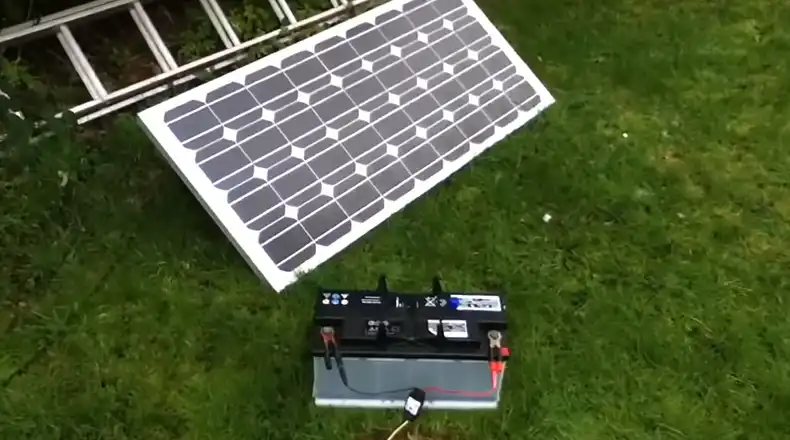
In this comprehensive guide, we’ll cover everything you need to know about using car batteries for solar panels including:
- When a car battery can be suitable for solar panels
- Key differences between car batteries and solar batteries
- Potential issues with using car batteries long-term
- What to look for when selecting a car battery
- How to set up and wire a car battery to solar panels
- Best practices for maintenance and monitoring
- Viable alternatives to traditional car batteries
We’ll also discuss why having a solar-specific energy storage system leads to more efficient system performance and lower operating costs in the long run.
So if you’ve been wondering “Can I use my old car battery instead of buying a new solar battery?” read on for the full low-down!
Is It Possible to Use A Car Battery for Solar Panels?
Yes, it is technically possible to use a car battery to store power from solar panels. Car batteries can function as a makeshift solar energy storage solution in limited use cases. However, there are significant downsides to using car batteries instead of batteries designed specifically for solar power systems.
While cheaper upfront, car batteries will generally have much shorter lifespans, lower efficiency, and less reliable performance when subjected to continuous deep charge/discharge cycles from solar panels. So it’s not advisable for permanent solar panel setups, but can work temporarily.
When Might You Use A Car Battery for Solar Panels?
While car batteries are not optimal, here are some situations where repurposing one can make sense in the short term:
- When Getting Started with Solar PV
Those new to solar often want to get their feet wet without a huge upfront investment. Using an extra car battery while testing a small solar panel system allows checking if solar is right for your property before spending money on full solar batteries.
- As Temporary Emergency Backup Power
Having an extra solar-connected car battery provides basic emergency backup power during grid outages. This can buy time until longer-term solar batteries are purchased.
- Due to Budgetary Limitations
Buying top-tier solar batteries, inverters, and other system components is simply not feasible for some homeowners initially. Using spare lead-acid batteries can help those with limited solar budgets build low-cost systems.
So while car batteries come with limitations for permanent use, they can serve as temporary “starter” batteries in basic systems or emergency backup power during outages. Next, let’s compare some key traits between car batteries and solar-specific options.
Similarities Between Car Batteries and Solar Batteries
While better suited to automotive applications, traditional car batteries share a few core traits with lead-acid solar batteries:
- Use similar lead-acid chemistry – Both contain lead plates in sulfuric acid electrolytes to produce electricity through a chemical reaction.
- Output equivalent 12V DC power – The 12-volt DC output can theoretically charge items like small solar generators or USB devices when wired to solar panels.
- Comparable cost – Lead-acid car batteries are often cheaper upfront than premium lithium batteries used in solar systems.
However, there are also key performance differences between the two battery types that matter for home solar usage…
Why Car Batteries Aren’t Great For Permanent Solar Setups
Despite some shared characteristics with solar-specific batteries, using car batteries long-term with solar panels often causes issues like:
- Premature failure and short lifespan of the car battery
- Inefficient system performance and energy loss
- Potential damage to solar panels and other system components
This stems from several aspects that differ in car batteries versus batteries designed explicitly for solar PV systems:
- Depth of Discharge
Car batteries are only built to handle shallow discharges – typically no more than 30%. They are optimized to deliver short bursts of high starting current, not deep continuous power.
In contrast, lead-acid solar batteries can experience repeated 50-80% discharges without damage over time. This greater “depth of discharge” capacity better suits solar’s intermittent energy generation and storage demands.
- Cycle Life
While car batteries may be warranted for 3-5 years, their lifespan is significantly lower when repeatedly discharged and recharged from solar panels.
Constant deep cycling causes faster deterioration of the internal lead plates. This can render car batteries useless after just a few months to a year with daily solar usage.
Comparatively, high-quality solar batteries provide 5000 cycles and beyond when properly maintained – equivalent to 10+ years of reliable operation.
- Outgassing and Maintenance
The lead plates inside flooded lead-acid batteries naturally produce small amounts of hydrogen and oxygen gases when charging, known as “outgassing”.
Car batteries are designed to use little water over their lifespan and not refill these lost electrolytes frequently. In comparison, solar batteries require routine water refilling to offset the higher volumes lost during outgassing.
- Improper Charging & Voltage Regulation
Solar panels produce fluctuating amounts of energy based on sun exposure, which needs proper regulation to avoid issues charging batteries.
Car batteries rely on a vehicle’s voltage regulation system and lack protections against overcharging/over-discharging from irregular solar input.
This absence of charge safety mechanisms puts both the battery life and solar system components at risk long-term.
- Lower Energy Efficiency
Car batteries have significantly higher internal resistance than solar-specific counterparts. This equates to 10-15% energy losses during charging and discharging versus just 5% or less with solar batteries.
In other words, more of the valuable solar energy gets wasted as heat rather than stored for later use. This worsens the cost-effectiveness of repurposing old car batteries.
What Type of Car Battery is Best for Solar Panels?
While car batteries are not ideal for permanent solar usage, if repurposing one makes sense for your situation then:
Use the highest-performance battery possible
Prioritize higher capacity batteries over standard passenger vehicle sizes to maximize:
- Stored energy for overnight use.
- Extended cycle life over just 1-2 years.
- Increased resilience to repeated deep discharges.
Truck or marine/RV batteries are suitable options given their extra plate surface area and thicker internal components. They tolerate solar demands better than smaller batteries before failing prematurely.
Just don’t expect the 5-10 year lifespans touted for automotive or marine usage – factor in replacing car batteries more frequently when subjected to intensive solar usage.
Why Batteries Are A Must for Solar Panels
Solar panels directly produce electricity anytime sufficient sunlight shines on them. The key challenge is that peak energy generation rarely aligns perfectly with peak household energy usage.
This is where batteries come in – to accumulate surplus solar energy during the daytime for on-demand use at night or during cloudy weather.
Specifically, solar batteries provide:
Energy Storage Capacity
- Stores excess solar energy for later consumption
- Powers critical loads when solar panels don’t actively produce
Voltage & Frequency Stability
- Smooth output – avoid damage to sensitive appliances/devices
- Maintain optimal electrical parameters to maximize inverter efficiency
Autonomous Operation
- Enable ongoing UPS-level backup power during grid failures
- Achieve true energy independence for off-grid solar arrays
In short, batteries are the backbone enabling solar PV systems to reliably power homes 24/7 regardless of weather or time-of-day conditions.
Having explored why solar demands robust energy storage, let’s examine solution options…
Why Traditional Solar Batteries Are More Suitable
Purpose-built deep-cycle batteries are engineered specifically to withstand the rigors of daily solar usage year after year. Let’s look at what sets them apart:
- Deep Cycling Capacity: As the name implies, deep cycle batteries can discharge 80-90% of their capacity repeatedly without damage accumulating over time.
This robust depth of discharge capacity ensures the batteries still achieve 80%+ of original capacity after thousands of cycles – perfect for solar’s volatile generation patterns.
- Longer Lifespans: Top-tier solar batteries last 5-10 years or more before needing replacement, even with repeated deep cycling daily.
This is achieved through thicker internal components and additional safeguards compared to standard car batteries.
- Advanced Safety Mechanisms: They incorporate extra protections against overcharging, over-discharging, and other harmful conditions that are common with solar panels.
These features protect both battery life AND the rest of the solar system components.
- Higher Efficiency: Proper solar batteries achieve 92-95%+ charging/discharging efficiencies. This conserves more of the energy entering and leaving the system.
In contrast, car batteries rated at just 75-85% lead to substantially more wasted energy in the long run.
In short, batteries purpose-built for solar PV applications lead to superior performance, safety, and value over time.
Deep Cycle Battery Options for Solar Usage
While lead-acid chemistry still dominates much of the solar battery market, more advanced lithium battery options are also rising in popularity. Let’s compare the common chemistry technologies.
1. Flooded Lead-Acid Batteries
Flooded lead-acid batteries are the most affordable option and still widely used with home solar systems. Their flooded cell design requires periodic maintenance to top-off water levels.
Advantages:
- Very low purchase cost
- Mature technology; easiest to service/maintain
- Recyclable materials
Disadvantages:
- Low energy density – very large and extremely heavy
- Loses capacity quickly if undercharged
- Requires maintenance to check fluid levels
2. Sealed Lead-Acid (AGM/Gel) Batteries
Absorbed glass mat (AGM) and gel battery designs retain the lead-acid chemistry in new form factors. Their plates are suspended in fiberglass mats or silica gel instead of liquid electrolyte.
This makes them non-spillable and maintenance-free compared to flooded batteries. However, they come at a higher upfront cost.
Advantages:
- Totally sealed and maintenance-free
- Withstand temperature fluctuations without damage
- Safe for indoor installation
Disadvantages:
- More expensive than flooded lead-acid
- Shorter cycle life than lithium-ion
- Suffer capacity loss if chronically undercharged
3. Lithium-ion Batteries
Lithium-ion solar batteries are the emerging gold standard given substantial performance improvements over lead-acid tech. However, their upfront cost can be 2-3X more per kWh over lead-acid.
Advantages:
- Extreme high energy density – ultra lightweight
- 5X more cycles than lead-acid
- Rapid recharging and 99% efficiency
- Operates in any orientation
- Superior low temp performance
Disadvantages:
- Very expensive upfront cost
- Requires advanced battery management system
- Can suffer thermal runaway issues if BMS fails or battery is damaged
While lithium-ion offers fantastic longevity and performance, lead-acid batteries provide the most affordable entry point for budget-limited solar consumers.
Can You Use An EV Battery for Solar Panels?
Electric vehicle (EV) batteries represent another potential repurposing opportunity given their high capacity and prevalence as used units enter circulation. However, some key aspects require consideration:
- Suitable Battery Condition
Unlike EVs designed for daily plug-in charging, solar usage involves very deep 100% discharges. This accelerates cell degradation if the EV battery already experienced heavy prior usage.
- Compatibility
The large-format lithium battery packs in EVs don’t natively work with typical solar equipment without custom voltage regulation and wiring modifications. This requires advanced technical savvy.
- Safety Concerns
DIY tampering with high-voltage EV batteries can be extremely hazardous if not handled properly. Their electrical shock and fire risks require caution.
- Upfront Cost
While cheaper than new units, used EV batteries still carry premium prices given strong demand. Their cost-effectiveness depends on the required retrofitting effort and pack condition.
In summary – repurposing EV batteries for home solar is technically possible but requires extensive custom engineering modifications to be safe, effective, and financially practical.
How to Use a Car Battery for Solar Panels
If using a car battery with your solar PV system makes sense in short, here are some best practices to follow:
Step 1: Necessary Tools & Equipment
- Quality solar charge controller
- Heavy-duty cables & wiring
- Battery terminal cleaner
- Battery fill fluid (if flooded type)
- Digital Multimeter
- Battery disconnect switch (optional)
- Battery tray or enclosure
Step 2: Use Charge Controller For Overcharge Protection
Given car batteries lack internal voltage regulation, adding an MPPT or PWM solar charge controller is strongly advised. Quality controllers prevent battery overcharging by limiting maximum voltage.
Set controller charging voltage to 14.4-14.6V for consistent float charging without exceeding car battery limits. This avoids premature failure from sustained over-voltage damage over time.
Also, enable temperature compensation if available. This automatically adjusts charging voltage based on sensed battery temperature.
Step 3: Verify Specifications Match Your System
Before connecting any battery to solar panels, double check:
- Voltage – 12V car batteries are standard; confirm solar components are 12V-compatible
- Capacity – Verify battery capacity meets your desired backup runtime needs
- Max charge/discharge rates – Size cables and fuses to stay within car battery ratings
Undersizing cables or exceeding amperage limits can severely shorten a car battery’s lifespan. Consult manufacturer specs to avoid equipment damage.
Step 4: Connect the Car Battery to the Solar Panel System
Once the appropriate solar controller and fuse/cables are in place, basic wiring steps include:
- Terminate cable ends with suitable lugs
- Ensure all terminals are clean and corrosion-free
- Secure lugs to both battery posts (mind polarity!)
- Connect the battery-positive terminal to the solar controller’s positive input
- Connect battery negative terminal to solar controller negative input
- Connect controller battery output to solar panels
This completes the serial connections from panels through the controller to the battery.
For multi-battery arrangements using a solar charge controller, wiring in parallel or series combinations affects overall voltage and capacity.
Parallel vs Series Battery Wiring
Parallel
- Simplest option
- Maintains 12V nominal voltage
- Sums battery capacities (Ah)
- Requires blocking diodes to prevent reverse discharge
Series
- Increases voltage (24V, 48V)
- Capacities remain the same
- No diodes needed
- Must equalize charge voltages across batteries
Series is preferred for small, low-voltage PV systems to boost voltage. Either wiring approach works for simple 12V backup setups using car batteries.
Operating & Maintaining Car Batteries
Once connected to solar panels, properly maintaining car batteries improves lifespan and avoids premature failure:
- Refill fluid levels – Check monthly on flooded batteries; refill with distilled water only
- Clean terminals – Check for corrosion monthly; clean and tighten terminals
- Inspect wiring – Check cabling, controller, & connections every 6 months
- Monitor charging status – Watch for under or over-charging indicators
- Consider seasonal maintenance charging – Manually charge from the AC grid to minimize sulfation during winter or long outages
Indications When It’s Time To Replace Battery
With intensive solar cycling, car batteries typically last just 1-3 years before requiring replacement. Signs include:
- Failure to hold full charge for over a day
- Corroded terminals unable to be restored
- Cracked battery case
- Reduced capacity/runtime from the original rating
Ideally, retire car batteries proactively once capacity drops 20% to avoid being left without backup power unexpectedly.
Alternative Solar Battery Options
When ready to upgrade beyond old car batteries, efficient solar-specific options now exist at many price points:
Starter/Budget:
- Sealed Lead-Acid Batteries
- Golf Cart T-105 Batteries
- Upgraded Flooded Lead-Acid
Advanced:
- Lithium Iron Phosphate Batteries
- AC-coupled Lithium Batteries
- DIY Lithium Battery Banks
All-In-One
- Expandable Solar Generators
- Integrated Solar Battery Appliances
With continued solar industry growth, complete plug-and-play solar plus storage solutions are becoming widely accessible to homeowners without previous solar or EV expertise.
Conclusion
They lack durability against sustained deep cycling, overcharge protections, and maintenance capabilities required for smooth year-round renewable energy harvesting. When ready to upgrade beyond the limitations of car batteries, modern solar-specific batteries, and integrated storage appliances now deliver superior longevity and performance more smartly tailored to home energy needs.
Hopefully, this guide gave you ample details on properly sizing, wiring, and maintaining car batteries for temporary solar usage. Thanks for reading – let us know any lingering questions in the comments!
Can A Car Battery Damage Solar Panels?
Yes, overcharging car batteries without proper voltage regulation can potentially damage solar panels over time. Panels should be wired through charge controllers to avoid battery voltages exceeding 15V.
What Solar Charge Controller Is Best For A Car Battery?
A quality MPPT controller with adjustable voltage settings around 14.4V to 14.6V is optimal for preventing car battery overcharging when connected to solar panels.
How Many Solar Panels Are Needed Per Car Battery?
As a general rule of thumb, plan for at least 200W of solar panels per car battery, and set the charge controller to 10-20 amps maximum current.
Can You Run A House Off Car Batteries And Solar Power?
While very small backup loads are possible, attempting to run an entire house would require a large bank of parallel-wired car batteries. This is unreliable and costly compared to dedicated deep-cycle solar batteries and inverters designed for whole-home backup.

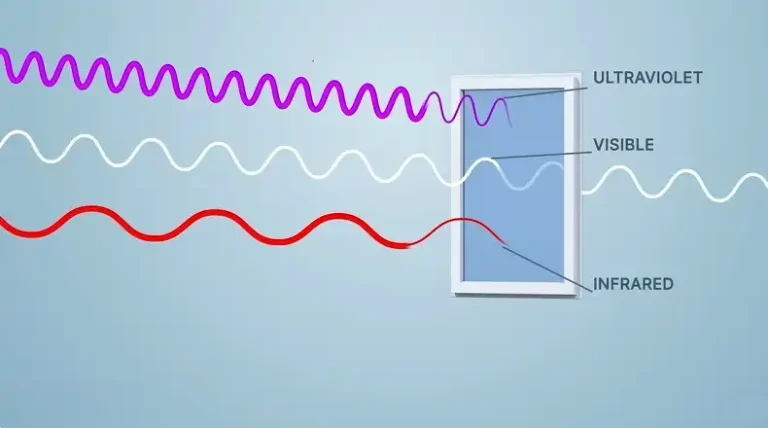
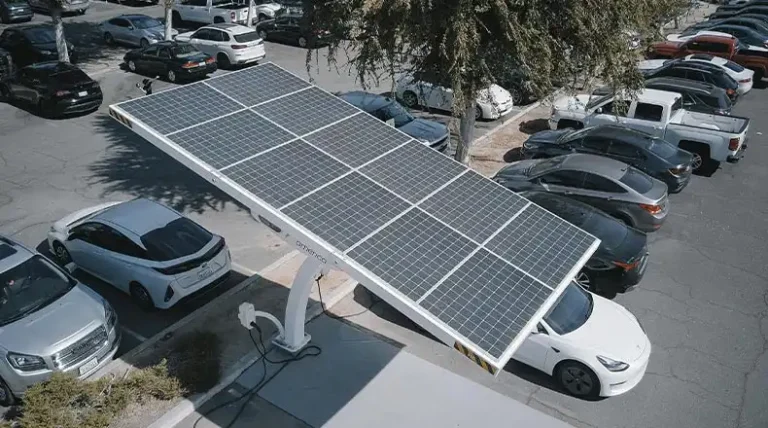
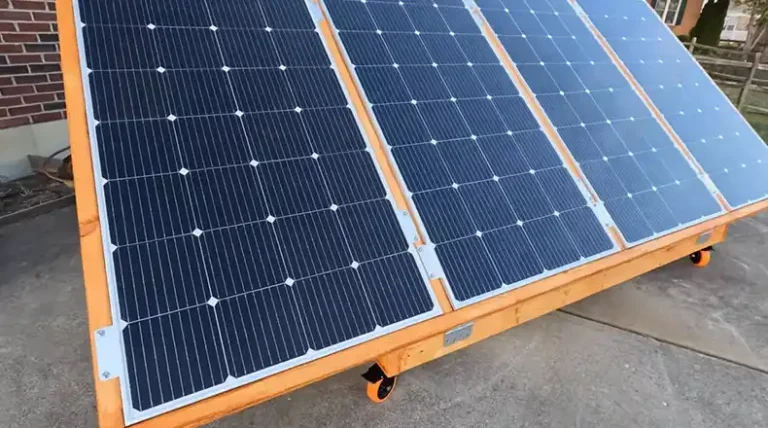
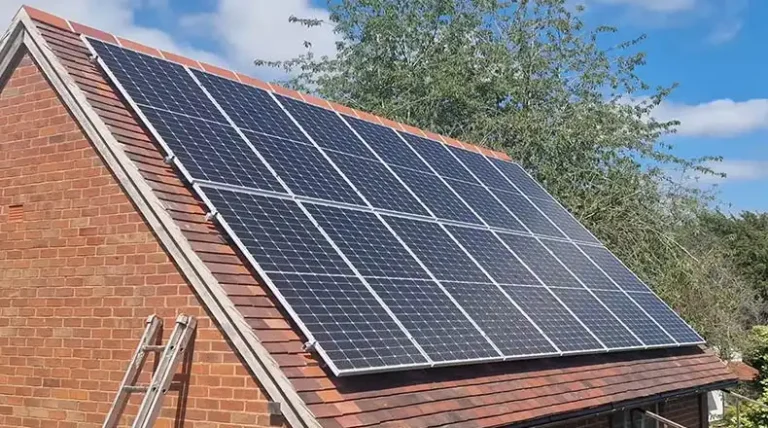
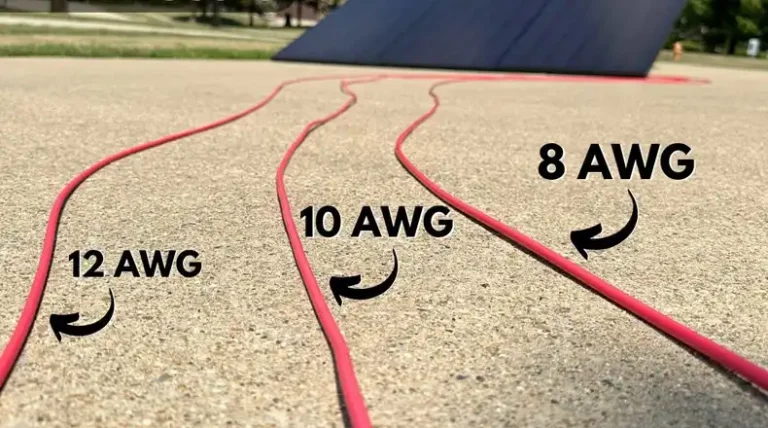
![How Many Solar Panels for 3kVA Inverter? [Answered]](https://www.itekenergy.com/wp-content/uploads/2024/06/How-Many-Solar-Panels-for-3kVA-Inverter-768x428.webp)